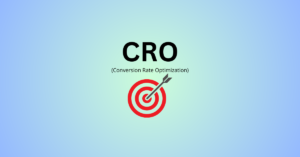When it comes to promoting products online, Google Ads Shopping campaigns are one of the most effective tools available for e-commerce businesses. They allow you to showcase your products to potential customers directly on the Google Search results page, providing a visual and highly engaging shopping experience.
In this blog, we’ll explore what a Shopping campaign in Google Ads is, how it works, its benefits, and how you can set one up to maximize your sales.
What is a Shopping Campaign in Google Ads?
A Shopping campaign is a type of ad campaign in Google Ads specifically designed for e-commerce businesses. Instead of using text-based ads, Shopping campaigns display product images, titles, prices, and store names directly to users who are searching for similar products.
These ads appear in:
– Google Search results
– Google Shopping tab
– Display Network
– YouTube
– Gmail
How Does a Shopping Campaign Work?
Google Ads Shopping campaigns work by pulling product information from your Google Merchant Center account. When you create a campaign, Google uses this data to match your products to relevant user searches.
Key Elements of Shopping Ads:
– Product Image: A visually appealing photo of the product.
– Product Title: A concise, keyword-rich title that describes the product.
– Price: The product’s price as listed in your Merchant Center feed.
– Store Name: The name of your business or brand.
When users search for a product, Google matches their query with the most relevant product ads using the information in your Merchant Center feed.
Benefits of Google Shopping Campaigns
1. Enhanced Visibility
Shopping ads appear prominently on search results, often above regular text ads.
2. Higher Click-Through Rates (CTR)
With visuals and pricing information, Shopping ads are more engaging than traditional text ads.
3. Qualified Traffic
Users clicking on Shopping ads already have high purchase intent, leading to better conversion rates.
4. Detailed Product Information
Ads display essential details, helping customers make informed decisions quickly.
5. Easy Performance Tracking
Google Ads provides insights into individual product performance, helping you optimize effectively.
Types of Shopping Campaigns
1. Standard Shopping Campaigns
– Manual Bidding: You control bids at the product level.
– Ideal for businesses looking for more control over ad placements and targeting.
2. Smart Shopping Campaigns
– Automated Bidding: Google uses machine learning to optimize bids and placements.
– Ads appear across all networks, including Google Search, Display, YouTube, and Gmail.
– Ideal for businesses seeking simplicity and efficiency.
How to Set Up a Google Ads Shopping Campaign
Step 1: Set Up a Google Merchant Center Account
– Create an account at [Google Merchant Center](https://merchants.google.com).
– Upload your product feed, including details like product name, image, price, and description.
Step 2: Link Merchant Center to Google Ads
– Connect your Merchant Center account with your Google Ads account to sync product data.
Step 3: Create a Shopping Campaign
1. In Google Ads, click on Campaigns > New Campaign.
2. Choose the campaign goal as Sales or Leads.
3. Select Shopping as the campaign type.
4. Choose your linked Merchant Center account.
5. Select your campaign subtype: Standard or Smart Shopping.
Step 4: Configure Campaign Settings
– Budget: Set a daily or monthly budget.
– Bidding Strategy: Choose between Manual CPC or Target ROAS for standard campaigns.
– Targeting: Specify locations, devices, and audiences.
Step 5: Create Ad Groups
– Product Shopping Ads: Showcase individual products.
– Showcase Shopping Ads: Highlight a group of related products.
Step 6: Launch and Monitor
– Monitor campaign performance using metrics like impressions, clicks, CTR, and conversions.
– Optimize your product feed and bids regularly.
Optimization Tips for Shopping Campaigns
1. Optimize Your Product Feed
Ensure accurate, keyword-rich titles, high-quality images, and complete product details in your Merchant Center feed.
2. Use Negative Keywords
Exclude irrelevant search terms to focus on more qualified traffic.
3. Segment Products into Ad Groups
Group products by categories, brands, or profitability for better control over bidding and performance.
4. Focus on High-Converting Products
Allocate higher bids to products with a strong sales history.
5. Leverage Remarketing
Use Dynamic Remarketing ads to target users who viewed but didn’t purchase your products.
6. Monitor Performance Metrics
Regularly analyze metrics like ROAS (Return on Ad Spend), conversion rates, and average CPC (Cost Per Click).
Common Challenges in Shopping Campaigns
1. Poor Product Feed Quality
Inaccurate or incomplete product information can lead to disapproved ads.
2. High Competition
Competing with larger retailers may require aggressive bidding.
3. Tracking ROI
Ensuring accurate conversion tracking is critical to measuring the campaign’s effectiveness.
Conclusion
Google Ads Shopping campaigns are a game-changer for e-commerce businesses looking to reach a wider audience and drive sales. With visually appealing product ads, advanced targeting options, and detailed performance insights, these campaigns help you connect with potential customers at the right time.




